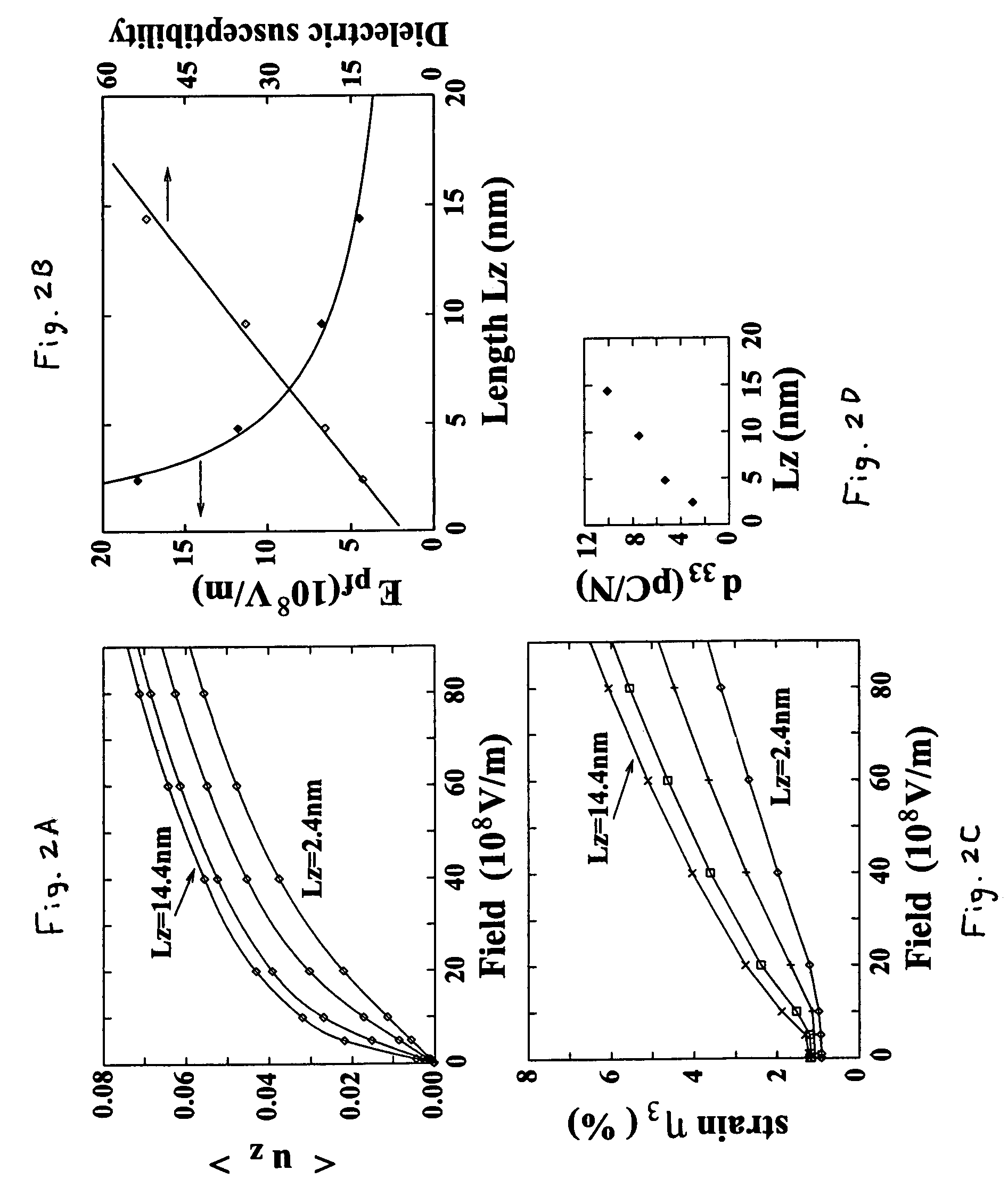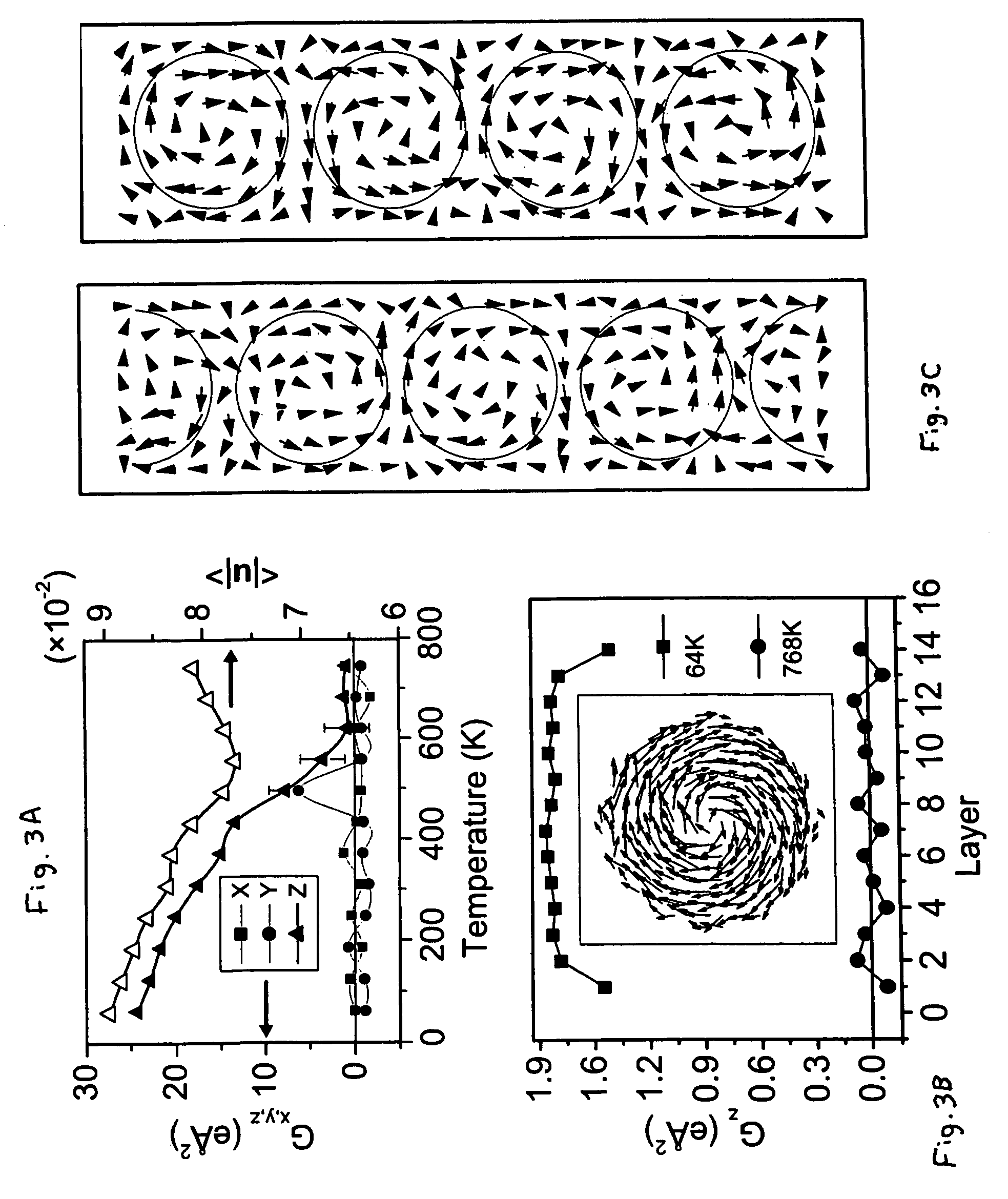Ferroelectric nanostructure having switchable multi-stable vortex states
a ferroelectric nanostructure and vortex state technology, applied in the field of ferroelectric nanostructures with switchable multi-stable vortex states, can solve the problem of not being able to be used for memory devices, and achieve the effect of increasing the data storage capability of non-volatile ferroelectric random access memory
- Summary
- Abstract
- Description
- Claims
- Application Information
AI Technical Summary
Benefits of technology
Problems solved by technology
Method used
Image
Examples
Embodiment Construction
[0035]We investigate, from first principles, the ferroelectric properties of BaTiO3 colloidal nanoparticles—and, in particular, answer whether there is ferroelectricity in FE nanoparticles and how these particles respond to applied electric fields. These properties are found to be unusual and differ from what is commonly believed.
[0036]Here, we further develop and use a first-principles-derived effective-Hamiltonian approach [18,19] coupled with Monte Carlo simulations. (Ideally, one would like to use direct first-principles density-functional theory, but this is currently computationally impracticable.) The effective Hamiltonians of Refs. [18,19], which are derived from first principles and possess a comparable accuracy, have been successfully applied to many FE materials, including simple BaTiO3 [20], PbTiO3 [21], and KNbO3 [22] systems, and complex Pb(Zr, Ti)O3 [19] and Pb(Sc, Nb)O3 [23] solid solutions. In this approach, local modes {ui} (i is the cell index) describe the ferroe...
PUM
| Property | Measurement | Unit |
|---|---|---|
| lengths | aaaaa | aaaaa |
| Tc | aaaaa | aaaaa |
| Tc | aaaaa | aaaaa |
Abstract
Description
Claims
Application Information
 Login to View More
Login to View More - R&D
- Intellectual Property
- Life Sciences
- Materials
- Tech Scout
- Unparalleled Data Quality
- Higher Quality Content
- 60% Fewer Hallucinations
Browse by: Latest US Patents, China's latest patents, Technical Efficacy Thesaurus, Application Domain, Technology Topic, Popular Technical Reports.
© 2025 PatSnap. All rights reserved.Legal|Privacy policy|Modern Slavery Act Transparency Statement|Sitemap|About US| Contact US: help@patsnap.com



